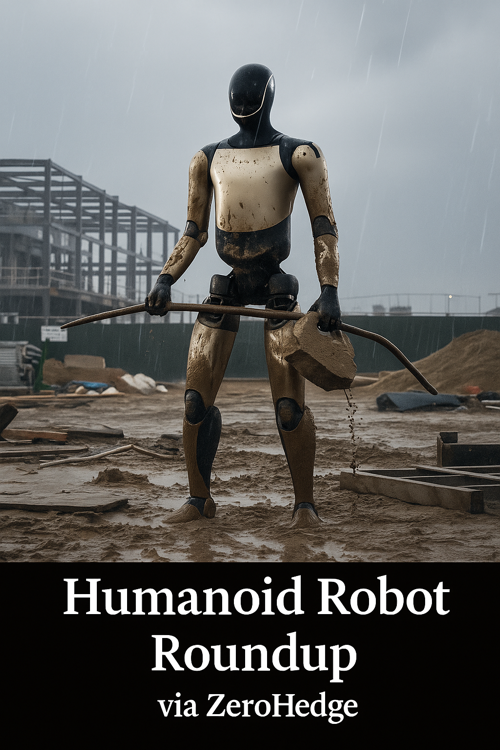In last week's "Humanoid Robot Roundup" report, we provided readers with additional color on Tesla's Optimus humanoid robot following the company's annual shareholder meeting in Austin, Texas. Limited production of Optimus has already begun at Tesla's Fremont, California factory, with plans to scale production next year.
In this week's robotics roundup, we highlight new insights from Goldman analysts led by Mark Delaney, who met with Sanctuary AI, a Vancouver-based robotics and AI company developing industrial-grade humanoid robots.
Our view here is to gain a clearer view of current robotics progress and the broader trajectory of automation.
Delaney's discussion with the heads of Sanctuary AI offers not only a snapshot of where humanoid robotics stands today, but also early signals of when automation may begin scaling across major sectors such as automotive, a shift that will translate into significant job displacement.
Within the analyst's four takeaways, number three is the most important. He concludes that industrial and automotive companies will likely be among the earliest adopters of humanoids. Timing is important as well: the expectation is that broad industry scaling is still two to three years away.
1. Sanctuary highlighted data/AI and hands/dexterity as key focus areas for R&D: On hardware, the company mentioned hand technology as one key area for development. Management discussed how it is developing proprietary technology for tactile sensors and utilizing hydraulics to improve hand technology and make progress with aspects including touch, strength, and power management. The company believes its hydraulic approach to the humanoid hand is the correct path, and that electromechanical hands can have drawbacks in terms of strength and overheating.
Sanctuary also noted the need for data to further develop its AI. While humanoid robots can be trained from open sourced LLMs and video data, the company noted that those inputs often lack the physical aspect to the world, including the sense of touch and torque. Sanctuary is developing its own foundational AI.
2. Management discussed that not all robots/humanoids need to be bipedal and noted safety, payload, and power usage as key considerations: On the form factor of the bots, Sanctuary commented that while there will be applications for bipedal robots, not all humanoids need two legs and, often times, customers are not specifically asking for bipedal robots. Management noted that some potentially limiting factors for bipedal robots in certain use cases include safety (e.g. two-legged robots can fall over including if they lose power), payload (e.g. the amount a humanoid can lift), and a higher level of power consumption.
3. Sanctuary commented that it believes the first use case for humanoids will be automotive and industrial customers, followed by services and logistics, with consumer applications being last: Management highlighted that industrial and automotive customers would likely be first to adopt humanoid technology in a meaningful way, as these organizations often have robotics/automation departments, and due to cost and safety considerations. The company commented that it is currently working with companies in these verticals on proof of concept deployments. The company also commented that many industrial customers are looking at how fast, accurate, and reliable humanoids are as key KPIs.
Sanctuary is also engaged with logistics companies, and they can have similar challenges as auto and industrial customers, although the requirements on hand/grip strength can vary. For consumer applications, the company cited cost, safety (e.g. the robot falling over), privacy, and connectivity as reasons that this market will likely be later for deployments.
On time to market, Sanctuary noted that while wider scale industry adoption could be 2-3 years away, small targeted deployments could be much sooner (and we believe small trials are underway already in some factories for the industry more generally). Longer-term, the market could be much bigger per the company. This is directionally consistent with the view expressed in our report: Platforms & Power - Part II: Humanoids and profit implications for autos & industrial tech.
4. Management plans to outsource a significant part of the manufacturing, but will make some key parts such as the hands in-house: Sanctuary commented that manufacturing is not one of its core competencies, and it will generally outsource manufacturing. However, the company noted it will do the final assembly and manufacture the hand in-house.
With our focus on point number three, we shift our attention to ....
Let's go back in time to our March 2023 warning:
Jobpocalypse incoming.
Loading recommendations...
